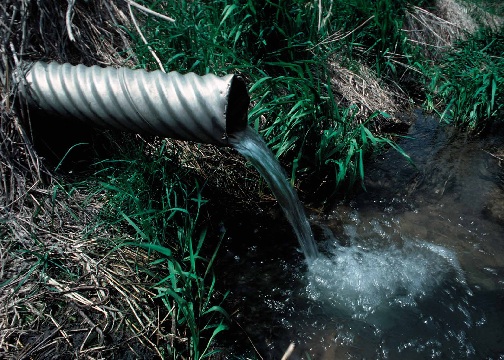Competency Area 3: Drainage and irrigation AEM
PO 19. Understand the potential impacts of the following factors affecting soil drainability and the installation of drainage systems:
- Location of Bedrock
- Topography
- Organic Soils
- Type of Crop
- Outlet
Organic Soils
The internal drainability of deep organic soils is rarely a problem because of their prevalence for large pores and high drainable porosity. Some organic soils are shallow over an impermeable clay or marl, which may restrict the internal drainage. However, the larger difficulty with draining most organic soils in the Northeast is usually a result of their landscape position.
Organic soils have mostly developed in low lying parts of the landscape where the natural drainage of excess water away from these areas is minimal. Since organic soils are most often used and developed for growing high value agricultural crops, more intensive drainage systems are installed to reduce water stress risk. Drains are often installed at closer spacing, and the design is adjusted to remove larger volumes of water in short periods of time.
Type of Crop
The type of crop and its sensitivity to poor drainage conditions establishes the criteria of whether drainage improvements are needed, and to what extent. The rooting depth of a crop is one important factor, as shallow rooted crops may be able to withstand water tables closer to the surface.
For a soil of the similar drainability, one crop may do well whereas another can't compete. This is often observed when a mixed forage seeding of alfalfa, birdsfoot trefoil, and timothy are grown.
Outlet
A soil may have a high drainable porosity, but its drainability depends on whether or not this gravitational water has a place to flow. Impermeable layers or a water table within the soil determine whether the drainable water will flow vertically downward, or laterally through the soil. The impermeable layer and water table also need to have some slope, or the water may not move laterally either.
Without an outlet of some sort, soils saturate, water accumulates, and eventually landscapes flood. In order for a subsurface drain to lower the water table in the soil, the outlet of the pipe has to discharge to a water surface elevation that is below the elevation of the water table in the soil. If this cannot be achieved by gravity utilizing changes in topography, then pumps are required.

Photo courtesy of NRCS
http://photogallery.nrcs.usda.gov
Quick Links
- Competency Area 1: Basic soil properties
- Competency Area 2: Soil hydrology AEM
- Competency Area 3: Drainage and irrigation AEM
- Competency Area 4: Soil health and compaction
- Competency Area 5: Soil conservation AEM
- Competency Area 6: Watershed hydrology AEM
- Competency Area 7: Non-point source pollution AEM
- Competency Area 8: Concentrated source pollution AEM
- Competency Area 9: Conservation planning AEM
